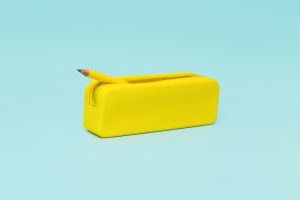When it comes to fostering your child’s development, few toys are as effective as building blocks. These timeless toys go far beyond simple play - they're instrumental in helping children develop critical thinking, problem-solving, and creativity.
Going from big blocks to intricate sets like LEGO, the benefits of block play are enormous and might be the best gift you can give them!
From Critical Thinking to Problem-Solving
Building blocks offer a hands-on way for kids to engage in problem-solving from a young age. As children stack, connect, and balance blocks, they’re making decisions and testing outcomes in real-time. For example, building a tower that keeps collapsing teaches them about stability, encouraging them to think critically about how to create a sturdier base. This iterative process - building, testing, and improving - mimics the problem-solving approaches they’ll use later in life.
Blocks also help develop spatial awareness, as children learn how different shapes fit together. They’re essentially acting as little engineers, practicing design and construction principles that form a foundation for future STEM skills.
Creativity Unleashed
What’s great about building blocks is their versatility. Not only do structured projects boost logical thinking, but unstructured play unlocks imagination. Your child could be building a house one day and a spaceship the next, allowing them to think outside the box and explore new ideas. Plus, when playing with friends or siblings, they also practice teamwork and communication - key life skills they’ll use well into adulthood.
Stages of Building Blocks Play
The number of blocks kids should play with depends on their age and developmental stage:
- Toddlers (12-24 months): At this stage, kids typically play with simple, larger blocks, using around 2-4 blocks to stack or build basic towers.
- Preschoolers (2-4 years): They can handle more, building with 5-10 blocks and starting to experiment with enclosures or simple structures like walls.
- Older Children (4+ years): They often work with 10-20 blocks to create more complex structures like bridges or patterns, enhancing their cognitive and motor skills.
Affordable Options
Luckily, there’s a wide range of building blocks to fit any budget. Basic wooden block sets start at around $10–$20, while more advanced sets like LEGO or magnetic tiles can range from $30 to $100, depending on the complexity. For toddlers, larger blocks like Mega Bloks are perfect and safe, usually available for $20–$30.
Tips for Parents
- Start simple: For younger kids, go for large, easy-to-handle blocks.
- Encourage creativity: Let your kids mix and match blocks, using them in imaginative ways.
- Play together: Build something with your child. It not only strengthens your bond but also models problem-solving behavior for them.
Overall, building blocks offer endless opportunities for learning through play, making them an essential addition to any child's toy collection.


